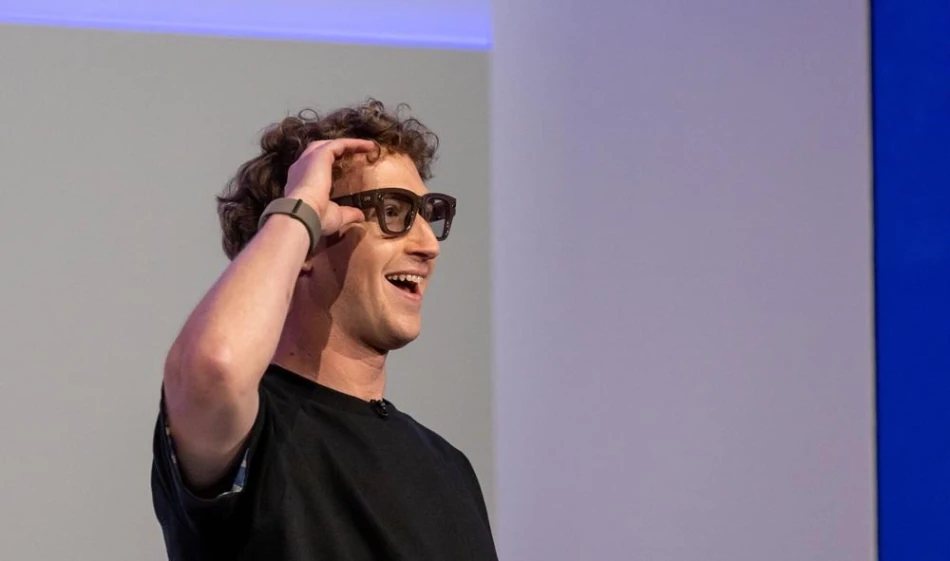
Meta Unveils Latest Metaverse Glasses, Betting Big on Artificial Intelligence
Meta Doubles Down on Smart Glasses Despite $4.5 Billion Quarterly Losses
Meta unveiled three new smart glasses models on Wednesday, marking its most aggressive push yet to replace smartphones with AI-powered eyewear. The launch comes despite Reality Labs, Meta's VR and AR division, posting staggering losses of $4.5 billion in Q2 2024 alone—a stark reminder that CEO Mark Zuckerberg's metaverse bet remains far from profitability.
The Display Breakthrough: Meta's First Smart Glasses with Screens
The flagship Meta Ray-Ban Display represents a significant leap forward, featuring integrated screens that overlay digital content directly onto the user's field of vision. Priced at $799, these glasses bridge the gap between Meta's current audio-only smart glasses and its experimental Orion AR prototype.
What sets the Display apart is its Meta Neural Band—an EMG wristband that reads nerve signals to enable precise finger gesture controls. This neural interface technology positions Meta ahead of competitors like Apple and Google in the race to create intuitive human-computer interaction methods.
Technical Challenges Persist
During the live demonstration, Zuckerberg experienced multiple failed connection attempts with Meta's CTO Andrew Bosworth, highlighting the technical hurdles still facing consumer AR technology. Such glitches underscore why analysts remain skeptical about widespread adoption timelines.
Athletic Focus: Oakley Vanguard Targets Sports Market
Meta's Oakley Meta Vanguard smart glasses, launching October 21 at $499, target high-intensity athletes with enhanced durability and nine-hour battery life. The sports-focused design includes helmet-compatible button placement and integration with Garmin fitness watches—a strategic move to capture the lucrative sports tech market worth billions annually.
This pricing strategy reflects Meta's confidence in premium positioning, with the Vanguard commanding a $100 premium over previous Oakley models while offering 3K video recording and louder speakers.
Market Reality Check: The Profitability Problem
Despite generating only $370 million in Q2 revenue against $4.5 billion in losses, Meta continues massive investments in Reality Labs. Leo Gebbie of CCS Insight notes there's "no realistic chance" smart glasses sales will make the division profitable short-term.
However, this mirrors Amazon's decade-long losses on AWS before it became a profit engine, or Tesla's years of losses before achieving automotive market leadership. Meta's strategy appears focused on long-term platform dominance rather than immediate returns.
Strategic Positioning Against Tech Giants
Meta's partnership with EssilorLuxottica since 2019 gives it a crucial advantage over Apple and Google, who lack established eyewear manufacturing relationships. While Apple's Vision Pro targets the high-end VR market at $3,499, Meta's sub-$800 pricing makes AR accessible to mainstream consumers.
The global smart glasses market, valued at $2 billion in 2023, is projected to reach $8.26 billion by 2030. Meta's early positioning could prove decisive if adoption accelerates, similar to how early smartphone investments by Apple and Google created lasting market advantages.
The Smartphone Replacement Gamble
Zuckerberg's vision of smart glasses becoming "the next major computing platform" with access to "superintelligence" represents one of tech's boldest bets. Unlike the failed Google Glass experiment of 2013, Meta's approach emphasizes familiar form factors through Ray-Ban partnerships and gradual feature introduction.
The company's rebranding from Facebook to Meta in 2021 signals unwavering commitment to this transformation, even as investors question the massive capital requirements. With smartphone markets maturing and AI capabilities advancing rapidly, Meta's timing may prove prescient—or premature.
The success of Meta's smart glasses strategy will ultimately depend on whether consumers embrace AR as enthusiastically as they adopted smartphones, and whether the company can sustain billions in annual losses long enough to reach profitability.
 Omar Rahman
Omar Rahman







